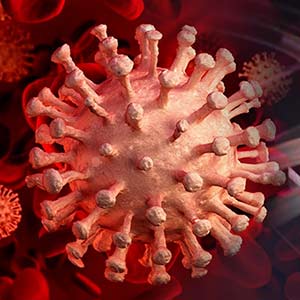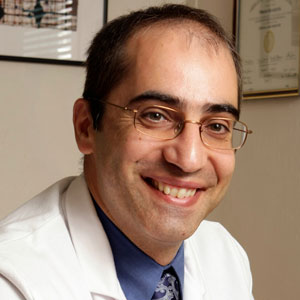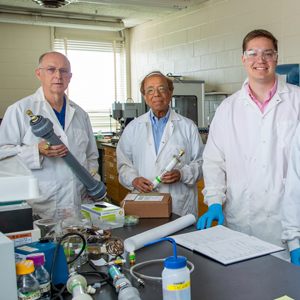There was no manual. No one had ever faced such a challenge.
But starting March 16, when COVID-19 forced NIEHS to move to maximum teleworking, employees across all branches began the hard, collaborative work to make the campus safe for eventual return.
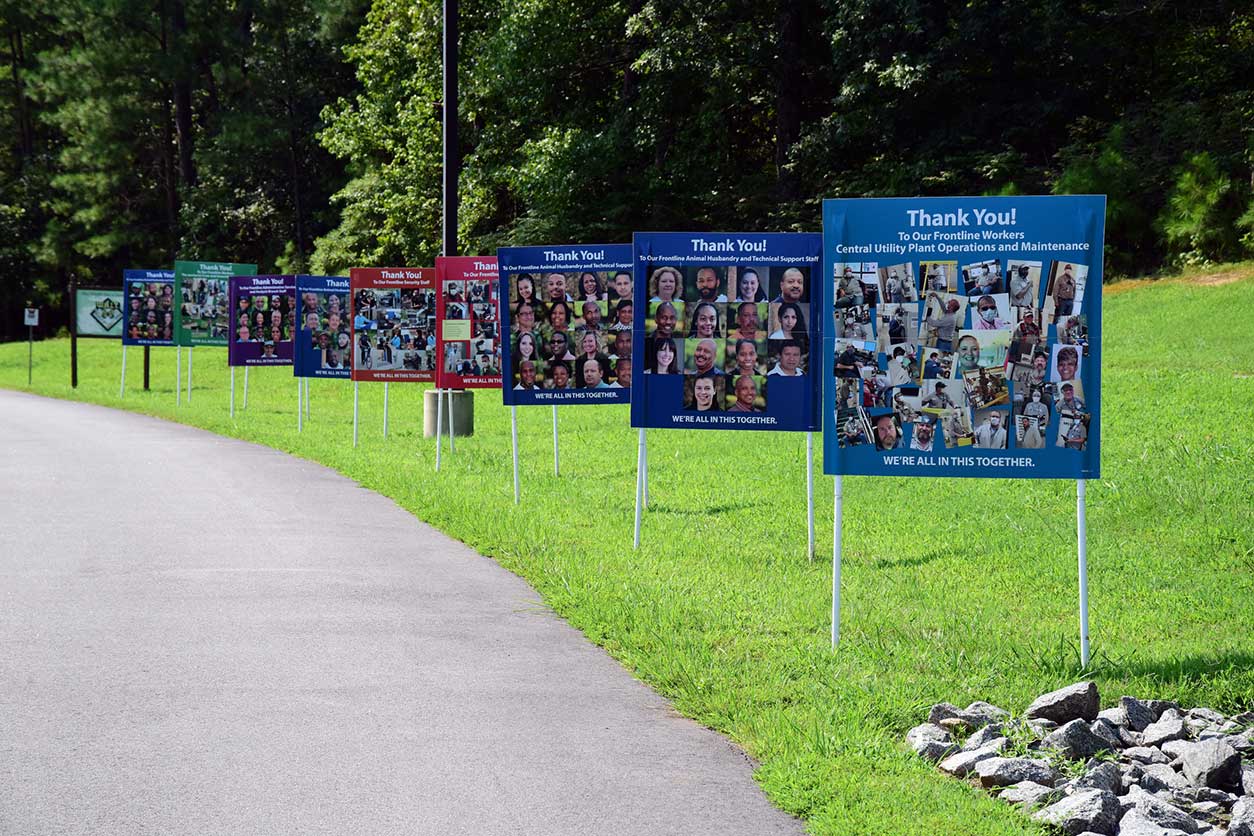 Signs along the entrance to the NIEHS campus thank employees who have worked on-site during the pandemic. (Photo courtesy of Steve McCaw)
Signs along the entrance to the NIEHS campus thank employees who have worked on-site during the pandemic. (Photo courtesy of Steve McCaw)“We kept the most critical research on-site, along with the most essential support people, such as facilities and security staff, safety people, animal care, warehouse staff, and some office services,” said Mitch Williams, NIEHS deputy associate director for management, who headed the institute’s Return to the Physical Worksite working group.
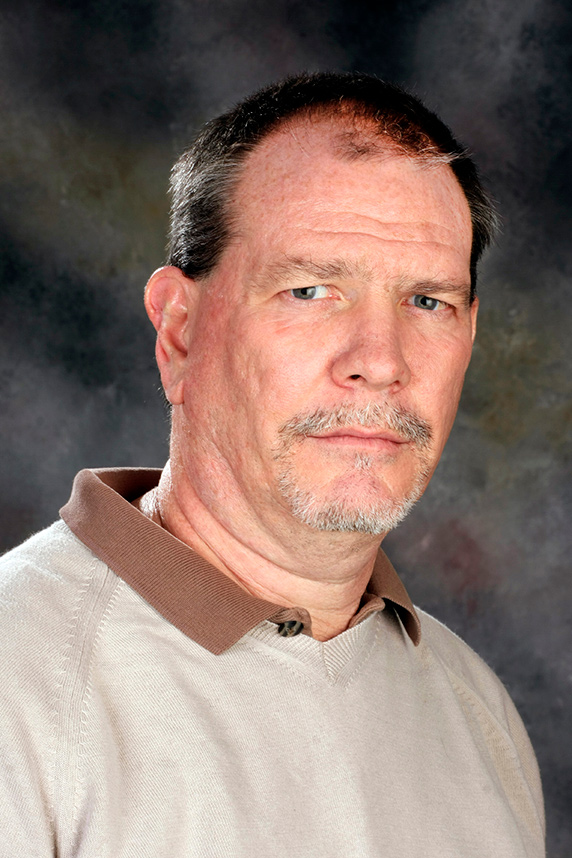 Williams and 18 other NIEHS leaders and staff served on the Return to the Physical Worksite working group. (Photo courtesy of Steve McCaw)
Williams and 18 other NIEHS leaders and staff served on the Return to the Physical Worksite working group. (Photo courtesy of Steve McCaw)Remaining on-site were some 15% of the roughly 1,900 NIEHS employees and staff from the Facilities Management Branch (FMB), which is part of the National Institutes of Health (NIH) Office of Research Facilities (ORF).
In the intervening months, other employees began to return to campus. As of this publication, there have been zero on-site transmissions.
Testing is key
Creating a safe work environment would prove to be a massive undertaking.
“The first thing that came up was asymptomatic testing,” said Williams. “We wanted people to know that when we brought them back, we would be able to monitor the situation on-site.”
Confidence in testing would be critical. “You can train anybody to take the samples, but people are more comfortable if it’s done by a medical professional,” Williams noted.
“We identified qualified medical personnel to serve as specimen collectors in a matter of weeks,” said Clinical Administrative Manager Kimberly Burnett-Hoke.
Drive-through convenience
Beyond building such confidence, the institute sought to expand employees’ access to testing through its drive-through Clinical Center Testing System.
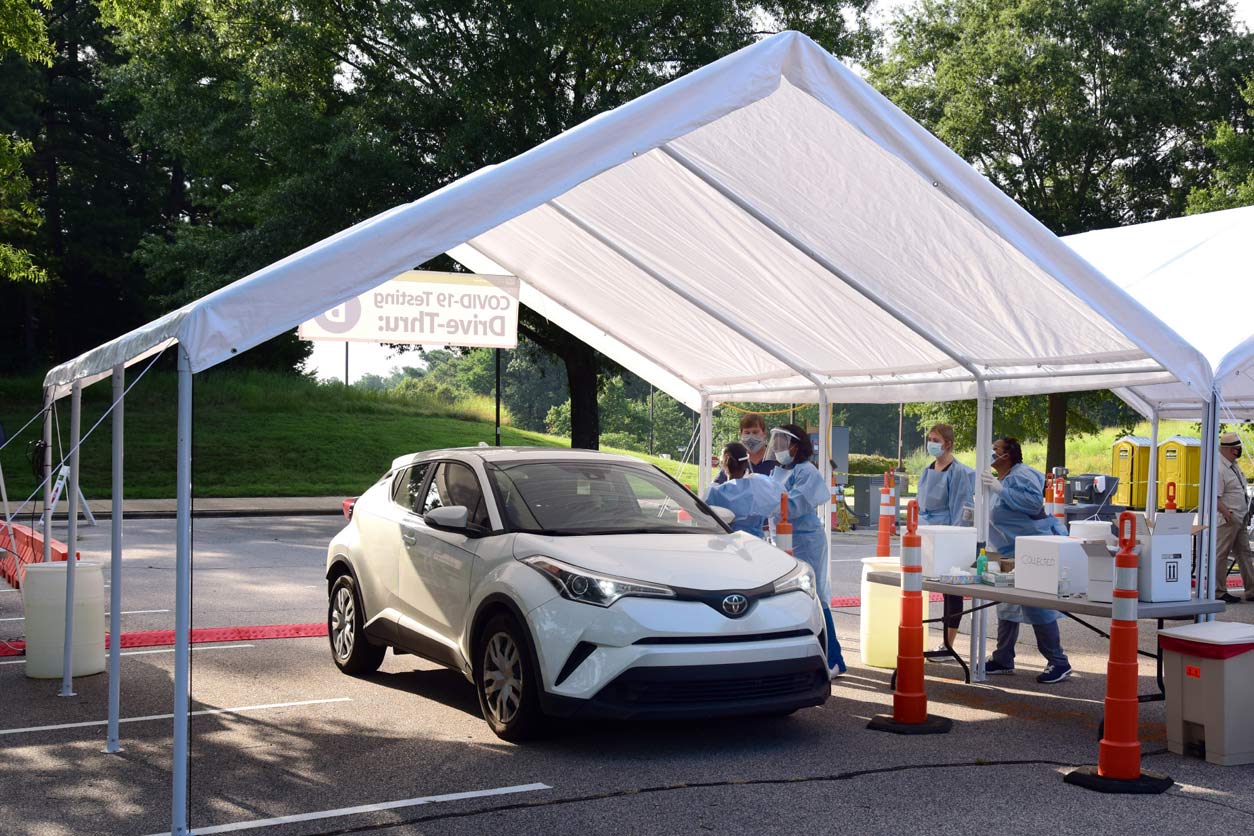 The drive-through testing site offers employees quick and easy COVID-19 asymptomatic testing. (Photo courtesy of Steve McCaw)
The drive-through testing site offers employees quick and easy COVID-19 asymptomatic testing. (Photo courtesy of Steve McCaw)“Thirty-five or so mechanics on-site worked tirelessly,” said FMB engineer Victor Stancil. By July 20, they had acquired and set up tents, a trailer, temporary power, porta potties, hand washing stations, spot coolers, and an Internet connection to NIH in Bethesda. The electrical transformer had to be upsized once during the setup to accommodate demand. ORF staff sets up and takes down the facility every day.
 Upon arriving at the front gates, employees receive a temperature check. (Photo courtesy of Steve McCaw)
Upon arriving at the front gates, employees receive a temperature check. (Photo courtesy of Steve McCaw)Overseeing the testing facility fell to Julie Nixon and Rob Levine of the Operations and Security Branch. Nixon organizes the equipment each morning and at the end of the day packs the specimens in ice to be sent overnight to NIH. The results are available within two days via a web portal. Of approximately 2,200 samples, there have been zero positive results.
Inside the main building, FMB workers also installed touchless drinking fountains, soap dispensers, and towel dispensers to enhance personal hygiene.
Supply chain challenges
Getting the supplies for all of these projects, especially personal protective equipment (PPE), was a daunting task. “My team members understood the urgency of the requests, and delivered at warp speed,” said Office of Acquisitions Director Melissa Gentry.
Kim Jones, an inventory management officer in the Administrative Services and Analysis Branch, ensured adequate amounts of PPE were available. “The COVID-19 crisis caused a massive strain in the supply chain,” Jones said. She worked with the Health and Safety Branch (HSB) to established procedures to stretch limited PPE supplies.
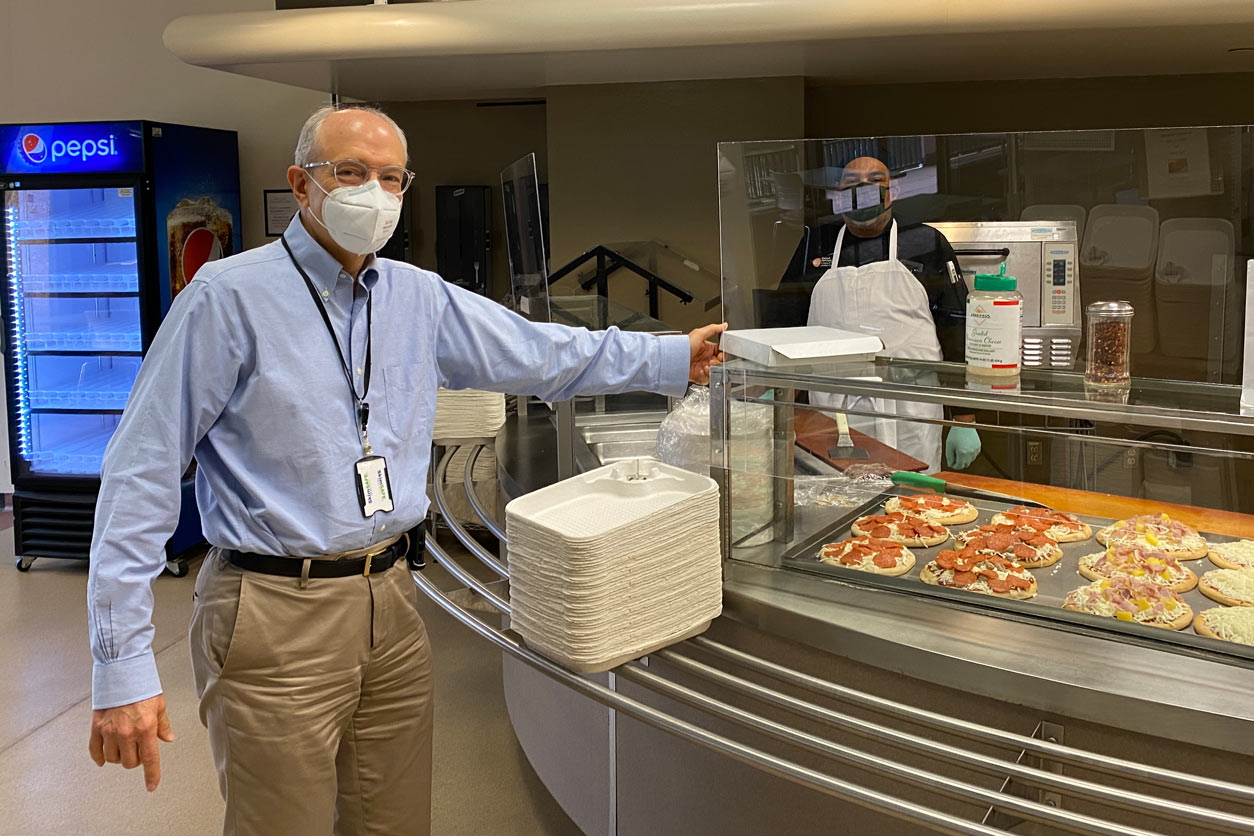 NIEHS and National Toxicology Program Director Rick Woychik, Ph.D., picked up lunch in the cafeteria while practicing social distancing. (Photo courtesy of Steve McCaw)
NIEHS and National Toxicology Program Director Rick Woychik, Ph.D., picked up lunch in the cafeteria while practicing social distancing. (Photo courtesy of Steve McCaw)The branch assisted in a wide variety of campus safety measures, according to Steve Novak, acting head of HSB. Some of those efforts include the following.
- Every returning employee receives five cloth face coverings.
- Centralized trash carts ensure housekeeping staff do not have to enter offices and labs.
- Floor stickers indicate where to stand in high-traffic areas.
- Signage limits elevators to one rider at a time.
- Special guidance fosters safe cafeteria operations.
Hibernation mode
“Providing ongoing care for 48,000 very valuable transgenic rodent animal models while keeping staff of 83 safe was a major concern,” said Comparative Medicine Branch Chief Kathy Laber, D.V.M. All but the most mission critical research had to be put into hibernation mode.
“We know now we can keep people safe on our worksite — we’ve proven that,” said Williams. “In some ways, people are safer here.”
(John Yewell is a contract writer for the NIEHS Office of Communications and Public Liaison.)





